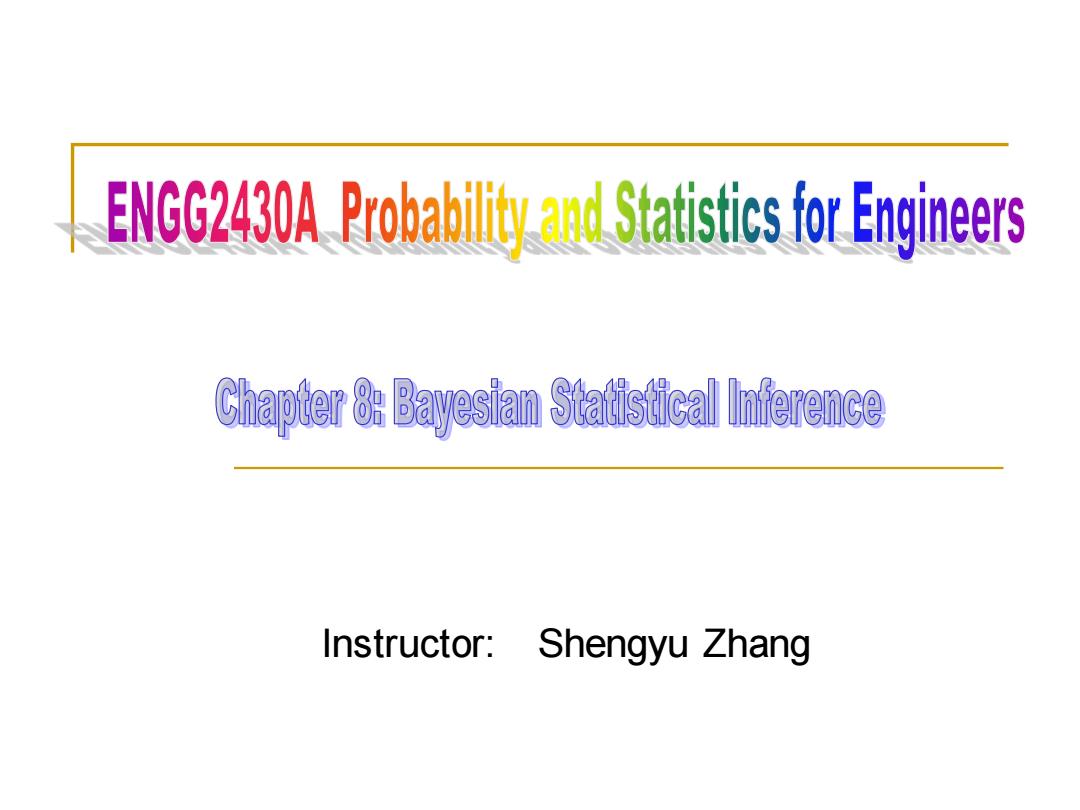
ENGG430Protaistics onnrs Chapter 8:Bayesian Statistical Inference Instructor: Shengyu Zhang
Instructor: Shengyu Zhang
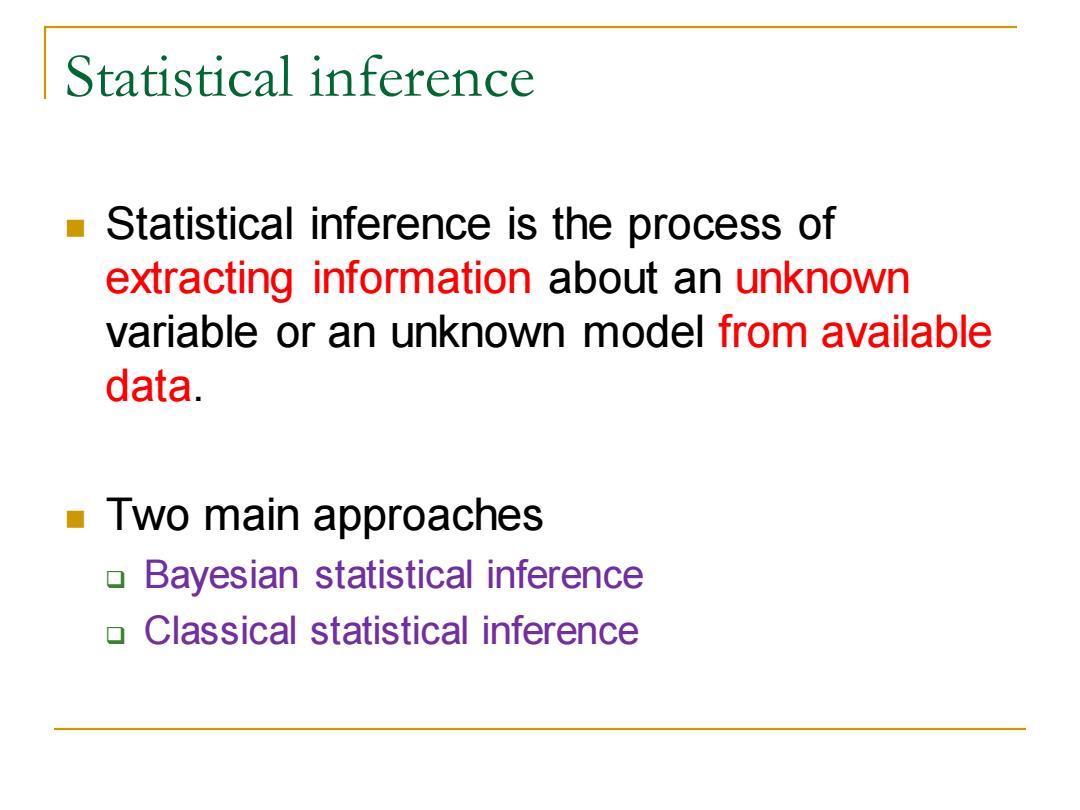
Statistical inference Statistical inference is the process of extracting information about an unknown variable or an unknown model from available data. Two main approaches o Bayesian statistical inference Classical statistical inference
Statistical inference ◼ Statistical inference is the process of extracting information about an unknown variable or an unknown model from available data. ◼ Two main approaches ❑ Bayesian statistical inference ❑ Classical statistical inference
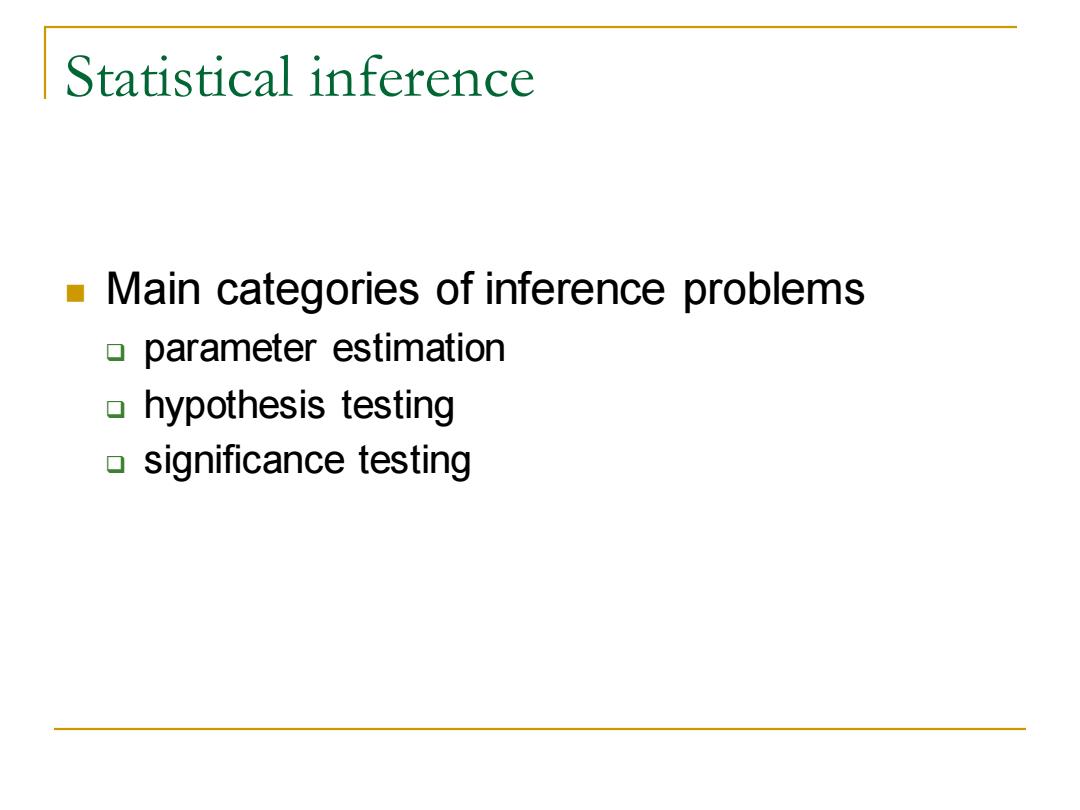
Statistical inference Main categories of inference problems oparameter estimation hypothesis testing significance testing
Statistical inference ◼ Main categories of inference problems ❑ parameter estimation ❑ hypothesis testing ❑ significance testing
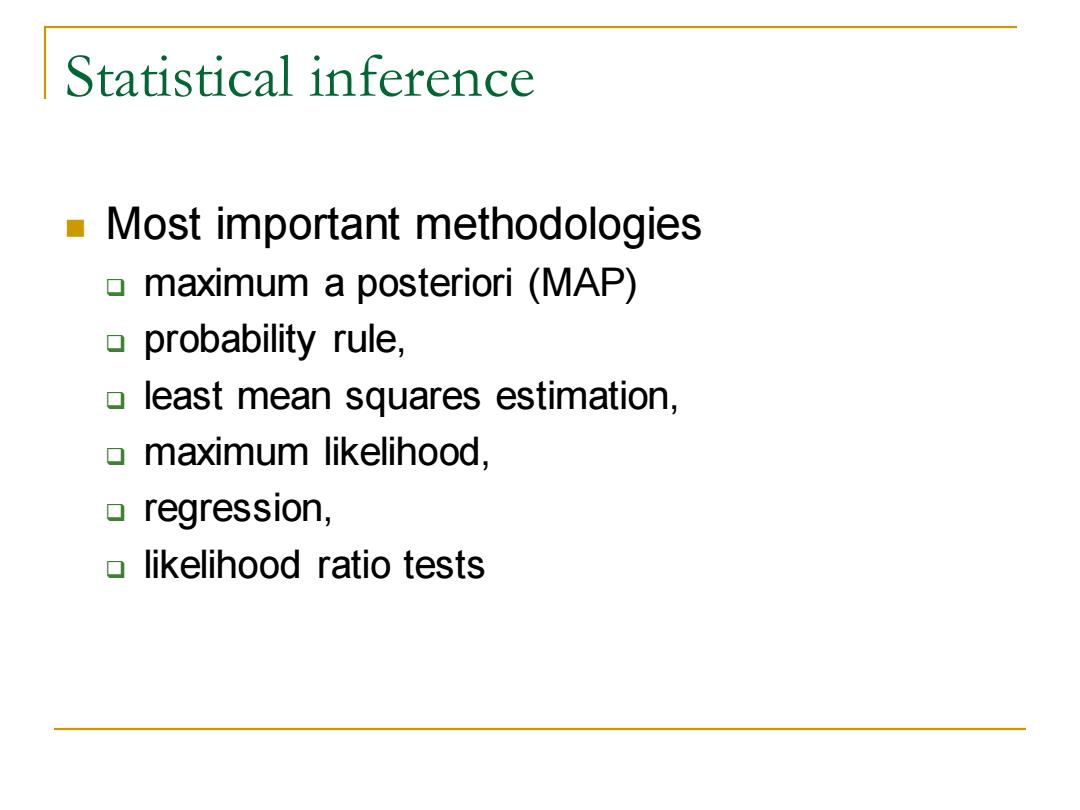
Statistical inference Most important methodologies o I maximum a posteriori(MAP) probability rule, least mean squares estimation, maximum likelihood. ▣regression, likelihood ratio tests
Statistical inference ◼ Most important methodologies ❑ maximum a posteriori (MAP) ❑ probability rule, ❑ least mean squares estimation, ❑ maximum likelihood, ❑ regression, ❑ likelihood ratio tests
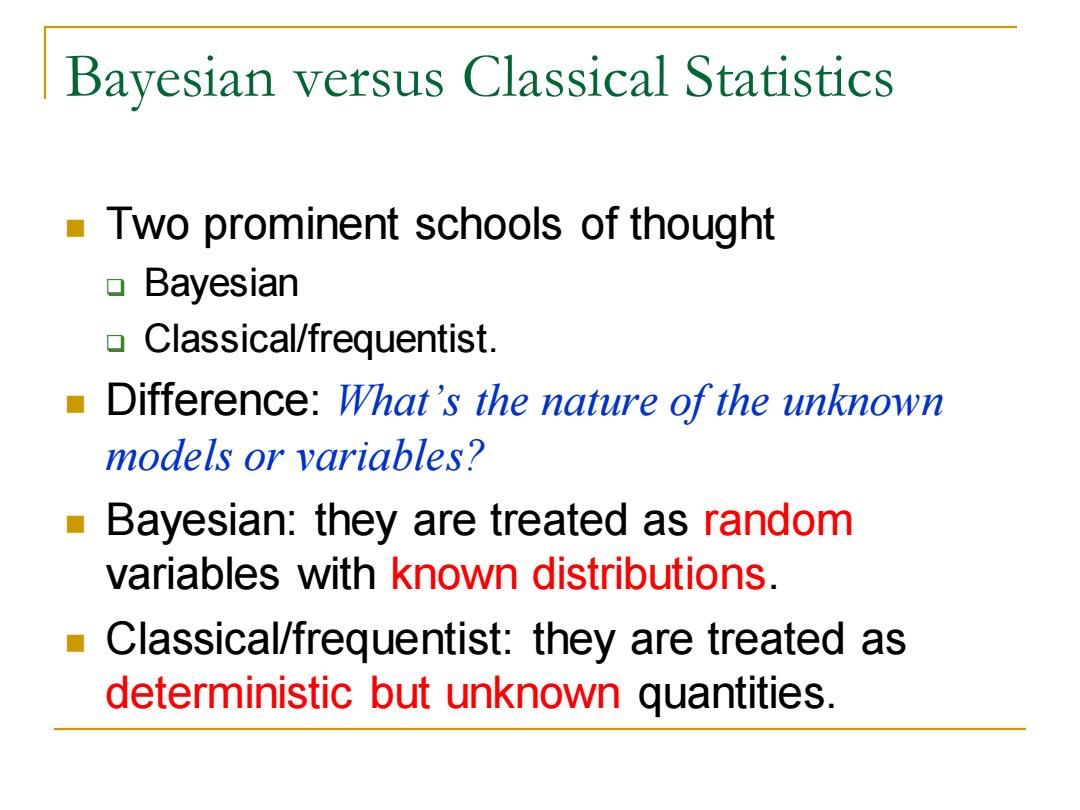
Bayesian versus Classical Statistics Two prominent schools of thought Bayesian Classical/frequentist. Difference:What's the nature of the unknown models or variables? Bayesian:they are treated as random variables with known distributions. Classical/frequentist:they are treated as deterministic but unknown quantities
Bayesian versus Classical Statistics ◼ Two prominent schools of thought ❑ Bayesian ❑ Classical/frequentist. ◼ Difference: What’s the nature of the unknown models or variables? ◼ Bayesian: they are treated as random variables with known distributions. ◼ Classical/frequentist: they are treated as deterministic but unknown quantities